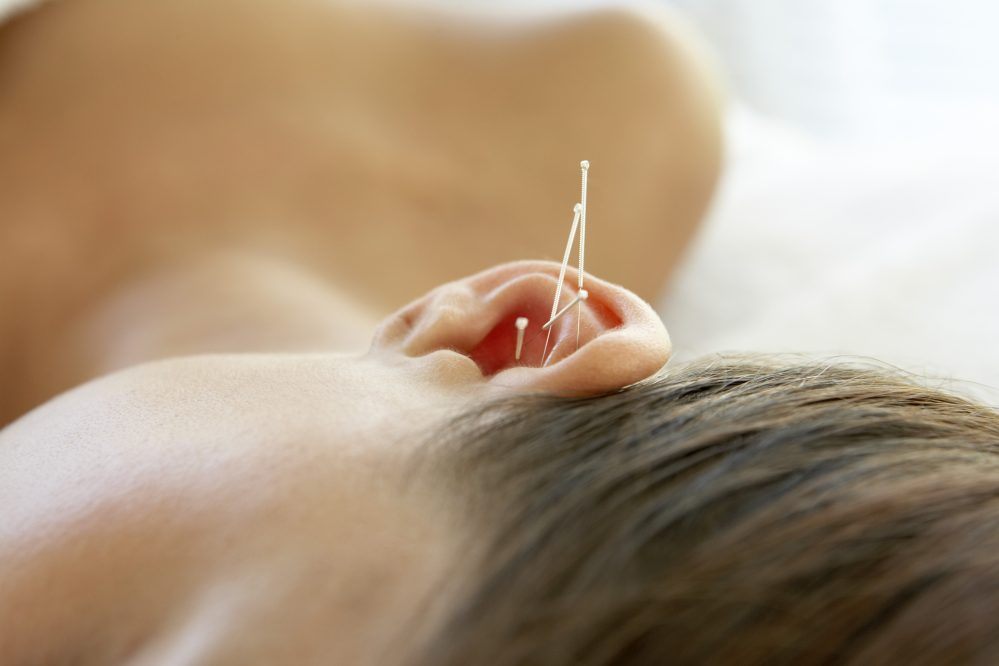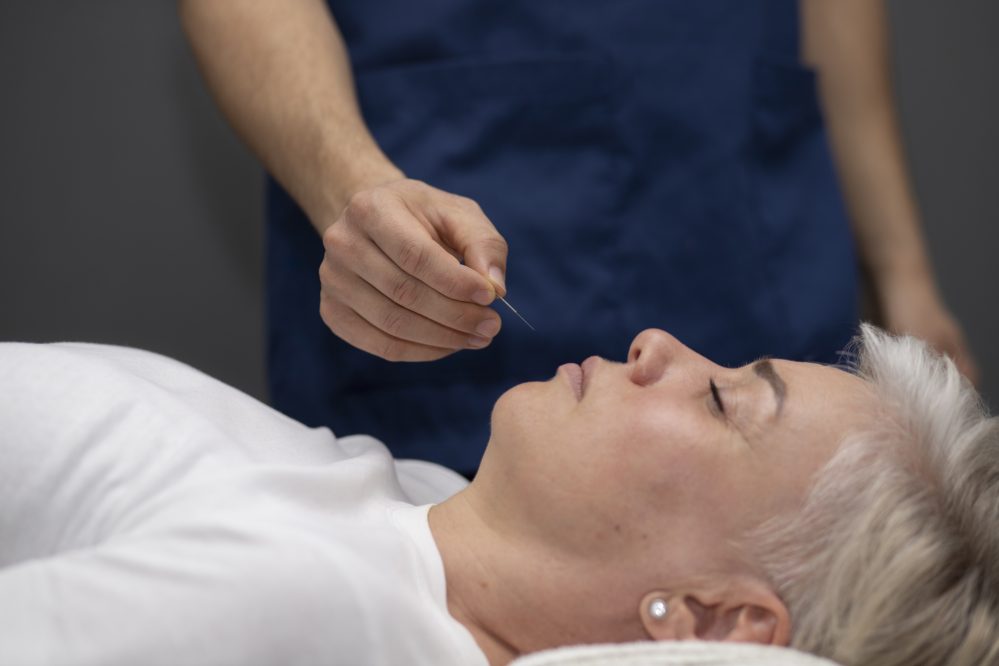The ancient practice of ear acupuncture has gained widespread recognition as a holistic approach to providing healthcare. Known for its therapeutic benefits, ear acupuncture is the art of inserting thin, sterilized needles in certain areas in the ear connected to meridians. According to Traditional Chinese Medicine (TCM), such a process promotes the balance of “qi” (energy) in the body and mind, which is considered vital to a healthy lifestyle.
This blog is your introduction to understanding the healing potential of key acupuncture ear points, exploring their pivotal impact on health, and diving into the ear acupuncture procedure and techniques. Join us as we unlock the body’s innate capacity for healing!
Key Acupuncture Ear Points and Their Significance
In medicine, the ear is considered a complicated microsystem of the entire human body. Specific areas in the ear correspond to different systems, functions, and organs. Based on this knowledge, acupuncturists focus on five main points when performing auricular (ear) acupuncture. Those include Shen Men, Liver Point, Kidney Point, Lung Point, and Sympathetic Point.
Shen Men is located in the upper section of the ear, just inside an area called the triangular fossa. Also known as the “spirit gate,” Shen Men is used for calming the mind and addressing heart-related issues and emotional well-being.
The Liver Point is positioned near the rim in the upper part of the ear. It helps target liver-related issues, detoxification, and blood purification and promotes the smooth flow of “qi” (energy).
The Kidney Point is located in the center of the ear. Also known as the water element, this point is linked to kidney function, regulating water metabolism, reproductive health, and energy levels.
The Lung Point is found on the lower side of the ear ridge, above the earlobe. Also referred to as metal point, it is related to respiratory health, focusing on conditions like asthma, cough, and other respiratory issues.
The Sympathetic Point is located along the ear’s outer portion, near the gate. This point is responsible for the nervous system, thus alleviating stress and anxiety and helping with pain management.
The Role of Meridians in Ear Acupuncture
Acupuncture is based around meridians, which, in Traditional Chinese Medicine, represent the pathways where the energy (“qi”) flows within the body. According to TCM, needle placement across certain body areas helps balance the energy flow, promoting health and well-being.
Acupuncture ear points are thought to be connected to meridians that run throughout the body. Stimulation of the ear points is thus believed to affect the corresponding meridians and the associated organs or bodily functions.
Meridians also assist acupuncturists in understanding their patients’ conditions, simplifying the treatment. For example, if a patient struggles with asthma, the acupuncturist will target the area in the ear associated with the affected meridian, i.e., the lung point.
What Can Ear Acupuncture Help With?
While its effectiveness may depend on the individual, ear acupuncture can assist in treating various indications. Here is an overview of its potential benefits in the areas it targets.
Stress Reduction and Improved Well-Being
Ear acupuncture can be a powerful tool in mitigating stress and improving well-being. Acupuncture needles stimulate the nervous system by influencing the release of endorphins, which are critical to lightening the mood and providing an optimistic approach, hence reducing stress. It also promotes a sense of relaxation, causing the patients to feel better. Ear acupuncture is effective in treating anxiety symptoms, too.
Chronic Pain Management
Besides massages, chronic pain is manageable through ear acupuncture. As a complementary therapy, ear acupuncture can provide relief from chronic back pain and arthritis and lower the frequency of headaches by 50%. This effect is caused by injecting needles into the corresponding areas in the ear, once again releasing the body’s natural painkillers (endorphins).
Weight Management and Appetite Control
Ear acupuncture is sometimes incorporated into dietary planning, helping individuals control their appetite and reduce cravings. For such outcomes, the acupuncturist will target specific ear points that are thought to contain the digestive system and metabolism and those responsible for stress and anxiety, which contribute to overeating. While it’s not a standalone solution for weight loss, ear acupuncture is considered part of a comprehensive approach, including a balanced diet and constant exercise.
Addiction and Substance Abuse Treatment
Overcoming substance abuse is another issue that ear acupuncture can assist with. When combined with traditional treatment, ear acupuncture is shown to impact alcohol and drug use reduction in the short term. In addition, stimulation of specific ear points correlated with the affected organs may help reduce withdrawal symptoms, including nausea, vomiting, diarrhea, and insomnia.
Ear Acupuncture Procedure & Techniques

The process of ear acupuncture requires careful planning and preparation. It employs techniques that need to be precise to result in productive outcomes. From beginning to end, here is what the procedure entails.
Preparation and Hygiene
Ensuring a clean and hygienic environment is crucial before starting acupuncture. The acupuncturist is expected to wash their hands thoroughly and wear disposable gloves. Meanwhile, the patient’s ears should be cleaned using alcohol or a disinfectant. This helps reduce any risk of infection. To elevate the session further, adequate lighting and a comfortable treatment space are preferable.
Needle Insertion and Stimulation
Contrary to body acupuncture, needles utilized in ear acupuncture are even thinner and smaller in size. Nevertheless, the acupuncturist must gently insert them into the ear’s specific areas, which are identified based on the patient’s goals or treatment plans. Once inserted, the acupuncturist can manipulate the needles slightly to achieve the desired effect. This causes a sensation described as a mild tingling or dull ache. Needles usually remain attached for around 15 to 30 minutes.
Ear Seeds and Ear Magnets
In addition to needle stimulation, ear acupuncture may involve the use of ear seeds or ear magnets. Ear seeds are tiny pellets, often made of metal or plant seeds, attached to the ear using adhesive tape. They provide continuous stimulation between sessions, as patients can press or massage the seeds for additional benefit. Ear magnets are similar but use small magnets instead of seeds. Both ear seeds and magnets are non-invasive and can be left in place for several days.
Assessment and Individualized Treatment Plans
Before starting ear acupuncture, the practitioner will assess the patient’s medical records, gaining insight into their conditions and specific concerns. Such assessment allows the acupuncturist to craft an individualized treatment plan that suits the patient’s needs. The choice of ear acupuncture points and techniques is also tailored depending on the requirements. Other factors considered include the patient’s constitution, preferences, and expectations.
Safety and Regulation
When deciding on ear acupuncture, patients wonder about the potential risks this therapy may cause. Taking the necessary precautions and adhering to safety protocols is critical to avoiding such issues.
Safety Considerations and Precautions
Although ear acupuncture is generally considered safe when practiced by a qualified professional, specific safety considerations and precautions should be considered. Those include ensuring proper hygiene and standards, using sterile needles as regulated by the FDA (Food and Drug Administration), and considering the patient’s medical history to identify contraindications and avoid potential risks. Special attention must be paid to patients who are pregnant, have a history of seizures, or are subject to skin conditions. In these cases, the acupuncturist may have to modify the treatment plan as needed.
Certification and Training for Practitioners

Those who perform acupuncture in general, and not just ear acupuncture, should be educated, trained, and certified professionals in the field. In the United States, qualified acupuncturists have completed a master’s degree in acupuncture or Chinese Medicine and have obtained a license by undergoing administered examinations (obligatory in most states). Other valuable credentials include a certification and practical experience. Typically, becoming an acupuncturist takes around 6 to 8 years.
Regulatory Oversight and Standards
The practice of acupuncture, including ear acupuncture, is regulated in many countries and states to ensure the safety and well-being of patients. Regulatory bodies establish standards for training, education, and ethical conduct for acupuncture practitioners. These standards often include guidelines for hygiene, needle disposal, and informed consent. Patients seeking ear acupuncture should choose practitioners licensed or certified by relevant regulatory authorities to ensure adherence to established standards of practice.
Conclusion
Ear acupuncture can benefit individuals struggling with various health conditions and seeking alternative solutions. It is a generally safe procedure that can help with reducing chronic and acute pain, managing stress and anxiety, and enhancing emotional and psychological well-being. However, ear acupuncture is not a standalone treatment and should not be considered as such. Necessary precautions and considerations must be taken to ensure positive outcomes.